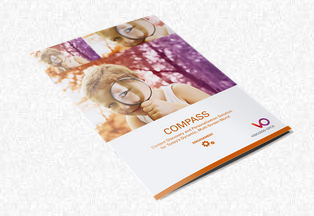
One of the holy grails of the current broadcast industry is increasing viewer engagement and undoubtedly one of the main ways of doing that is via offering viewers an increasingly individualised, personal service.
Traditional linear television limited the choice to what was on air at the time, essentially a handful of channels that broadcast for only a part of the day. Since the early 1990’s, primetime alone has mushroomed from around 12 hours a day of consuming content across all channels per evening, to 1000s of hours, and that’s even before you start to account for the impact of OTT, time shift and other components of the multicast world.
In this new TV era, satisfied viewers will both stay longer, and purchase and consume more content while they are there. However, they often find themselves lost in the sea of shows, films and series offered to them through multiple devices and channels. Each member of the family – children, youths and adults, have their own content package to binge on, be it Sponge Bob, the Kardashians or True Detectives. And the question begs: is there ever enough time for this in the busy day?
This is why improving the complete customer experience is such an important goal for content service providers seeking to increase customer loyalty and maximize revenues. Fortunately there are many new developments in this space as users search for new methods that can more closely match the right content to the right user at the right time.
The key is to become more customer-centric — providing users with a service that they shape, drive and control themselves through an elegant UI— and next generation personalization. But it's not just about content recommendations, for example, when a user likes a programme and the service can recommend similar content in the first instance, and also update when a new episode or new season of one of their favourites is about to start, suggest recording it, send reminders via email – that’s the next level of personalized service. In other words, a good content personalization system needs to support a variety of use cases, various content types, business models and content sources. It has to provide recommendations based on similar usage patterns and the viewer requests history, whilst pulling in data regarding critic ratings, popularity, operator promotions and more.
Another layer of content personalization is the ability to make the multi-screen experience a contextualized one. Going back to the Sponge Bob vs True Detectives scenario, today’s audience wants their devices to recognize them as individuals and communicate their individual information across devices. Users want the service to allow them to record their shows separately from their children’s series. A good content personalization solution will let the audience do just that – and more: pick a show by its genre, offer the right show at the right time, and remember the user’s login – across all devices.
These examples indicate the future of personalization solutions: a shift to a contextual experience that is tailored and adaptive to the user, and sometimes predictive too. A research issued by Forrester: Advance to Next-Generation Personalization, places context as the most important ingredient in the personalization of services. According to the research, contextualization is comprised of factors like who the customer is; what they did in the past- and what are they doing right now: are they travelling on the train or watching a show in their living rooms? What time of the day is it? Should thrillers or movies with graphic scene be suggested if the children are still awake? By collecting this information, the Forrester research suggests that:
organizations can map this data to aggregate information about similar users to help predict what an individual may be trying to achieve at a given point in time.”
Refinement techniques are also cross-industry. They include micro-tagging and adding more granular metadata, which can be done even quite simply by licensing multiple commercial sources, increasing reliance on contextual data (time of day and season etc., all of which have an impact on viewing decisions), and the growing use of data analytics to inform strategic decisions about what content a broadcasters should be — and should not be — providing, an important component of rights re-negotiations. The use of data for strategic decision making is evident in the TV industry almost on a daily basis. Last month, US cable TV giant Viacom announced it is taking a $750 million restructuring charge as part of a “strategic realignment”. In practice, these steps meant writing down reruns of shows like “CSI,” “Entourage” and “Community,” among others – due to weak ratings. In case of Netflix, which will not disclose audience data, renegotiating rights and setting the proper pricing model are challenging tasks– as programmers recently told Adweek.
The story of the evolution of television in the last decades is a story of expansion and proliferation. An endless offering of engaging content, on a huge variety of means to watch it. The next chapter in the history of TV services is about narrowing it all down: helping the busy, individual viewer to define their taste and preferences – by allowing technology to curate the right content experience for them.
Want to learn how we do it? Download our guide to COMPASS – VO’s Content Discovery Platform.

